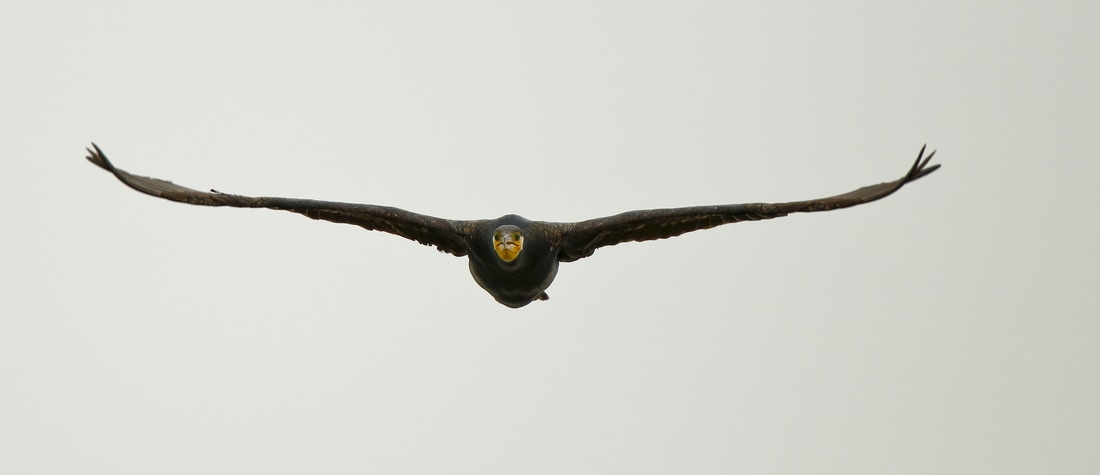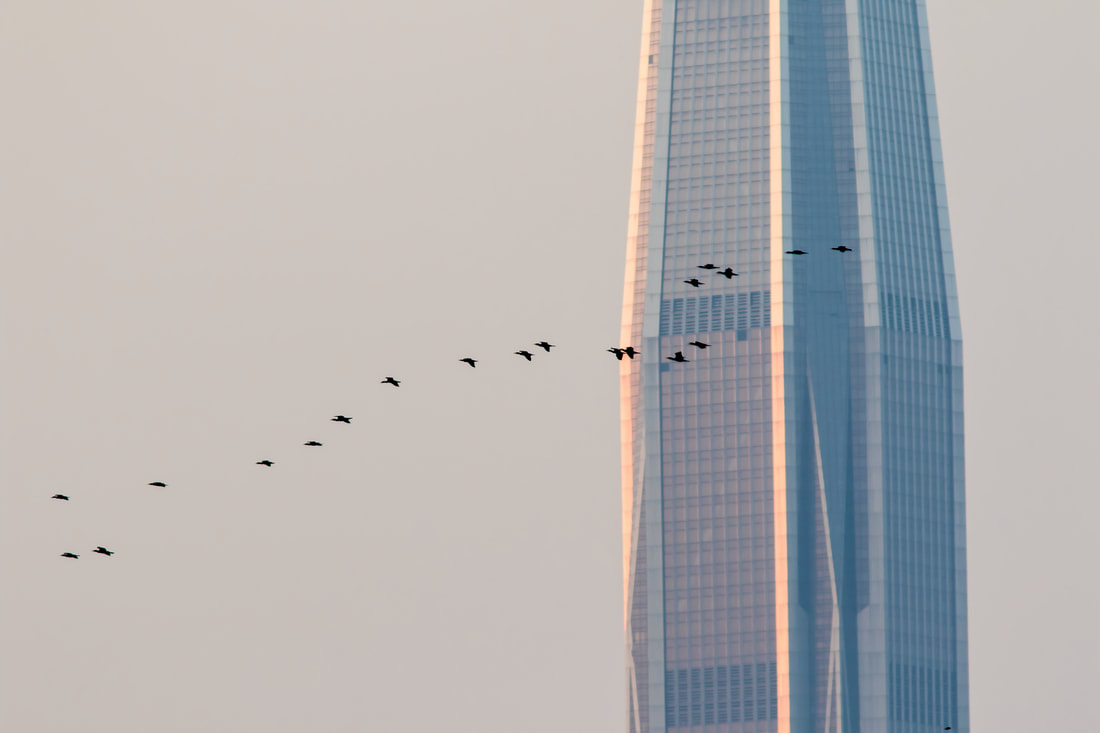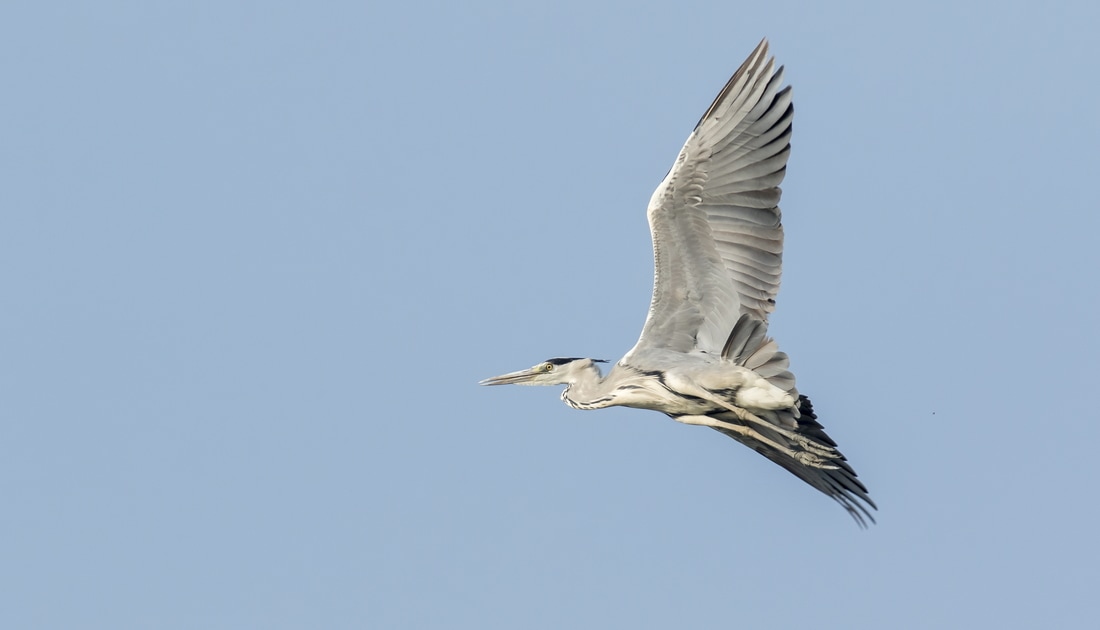|
The Great Cormorant Phalacrocorax carbo is perhaps not one of birdwatchers’ favourite birds. It is too common for that, as well as being perceived as rather inelegant. As a fish-eater, it is disliked in many parts of the world by those involved with commercial fisheries and has been persecuted in the past. However, current global populations are high.
The race that occurs in Hong Kong is Phalacrocorax carbo sinensis, which ranges from western Europe eastwards through central Asia to eastern Russia, India and China. It is one of the most abundant birds at Mai Po in the winter and, to my mind, the reserve would be far less atmospheric without these birds. Those that occur here are thought to breed in Mongolia or perhaps a little further to the north in Russia. Birds are usually present from the first week of October through to the second week of April with peak numbers occurring in January and February. The majority of birds depart in the second half of March. Up to 10,000 winter in Deep Bay. (The highest count is 11,424 in February 2005; the peak count in the last winter [2015/2016] survey was 8,247 in January.) This is around 8-10% of the regional population, making this one of the most important wintering sites for Great Cormorants in Asia. The birds may be seen as a threat to the fish in the commercial ponds around Mai Po. Some of these ponds have thin wires strung across them to deter the cormorants and this appears to be effective in reducing predation on fish by the cormorants. The majority of cormorants, however, seem to feed out in Deep Bay or offshore in other areas when large shoals of fish are discovered. Mai Po itself is mainly used as a safe roosting and loafing site by the birds; the trees near the Education Centre are particularly favoured and slowly turn white during the winter due to the birds’ droppings. Come March, the trees look lifeless but once the cormorants depart, the leaves grow back and the trees seem none the worse for the wear. The images that follow were taken when I was preparing Mai Po: The Seasons-A Photographic Essay.
0 Comments
I have spent some time on three afternoons recently walking the bunds between the fish ponds at San Tin, bird watching and taking photographs. I like this area. It is quiet; there are few people around apart from the fish farmers going about their business. In many ways, it’s a place “far from the madding crowd” – or it would be were it not for the metropolis of Shenzhen a stone’s throw away. Once - even in my time here - most of that modernistic city was like San Tin, undeveloped countryside. No more. San Tin is very birdy. Egrets are everywhere, feeding on discarded dead fish, or live fish when a pond is drained down. Great Cormorants are constantly flying overhead and Black-faced Spoonbills fly over too, sometimes coming down to feed on drained ponds although they are shyer than the egrets and often fly off when they detect a human presence. Waders frequent the sides of the ponds: mainly tringa sandpipers – Common, Green and Wood Sandpipers, and Common Greenshanks – but also Black-winged Stilts. Duck frequent the less disturbed ponds. I saw Northern Shoveler, Eurasian Teal and a single Garganey during my afternoon visits, but the most obvious birds on the ponds are Little Grebes. One pond held 25 of these birds. Black Kites are common scavengers here, as are Collared Crows. Other birds of prey I’ve noted on my recent visits are Common Kestrel, Western Osprey and a juvenile Pied Harrier; the latter is rare in Hong Kong outside the autumn migration period but this individual seems to be wintering here. Other bird watchers have reported Eastern Imperial and Greater Spotted Eagles – perhaps more likely in the early morning than the afternoon. Black-headed Gulls also fly in from Deep Bay to feed over the ponds. On February 12th, they were joined by four Whiskered Terns - the first 2017 record of this species on its spring migration through Hong Kong. The bunds themselves hold a number of Eastern Yellow and White Wagtails, and Richard’s, Red-throated and Olive-backed Pipits, as well as Little Buntings and Stejneger’s Stonechats. Other common birds here are kingfishers – Common, Pied and White-throated - and a variety of mynas, starlings and doves. The latter birds often feed on the heaps of discarded white bread crusts that are presumably put out by the farmers on the bunds as supplemental fish food. Species I’ve seen on my three February visits are Common and Crested Mynas, Black-collared, White-shouldered, White-cheeked and Red-billed Starlings, and Spotted, Eurasian Collared, Red Turtle and Oriental Turtle Doves. The images that follow were taken during my recent visits. Text and images copyright David Diskin
|





















 RSS Feed
RSS Feed
